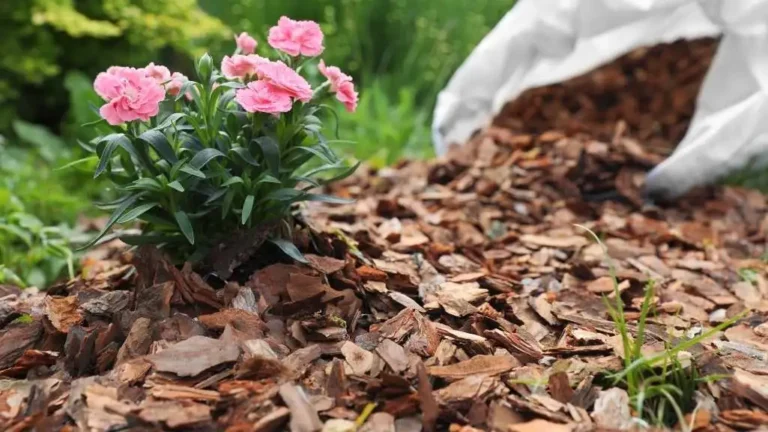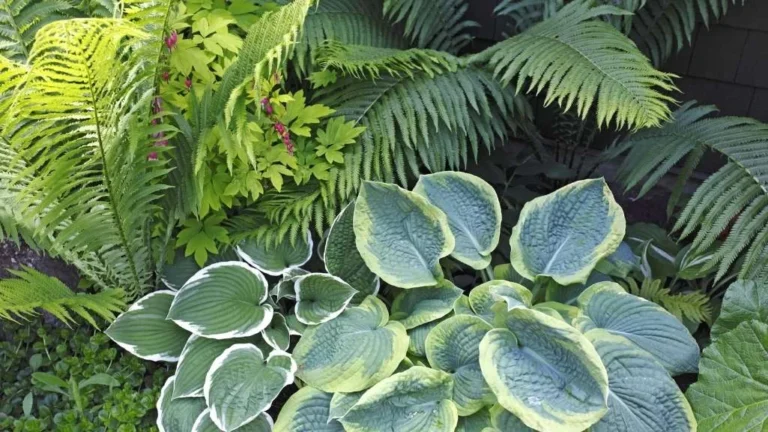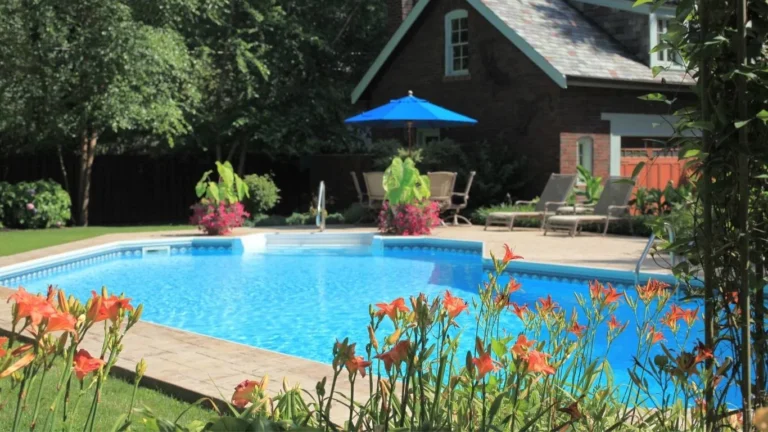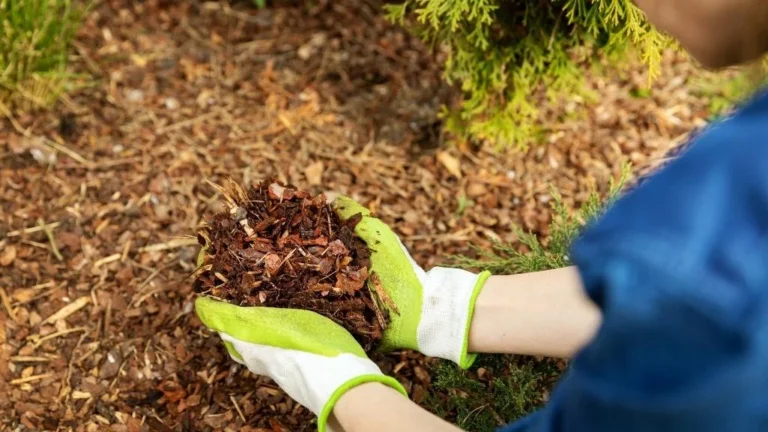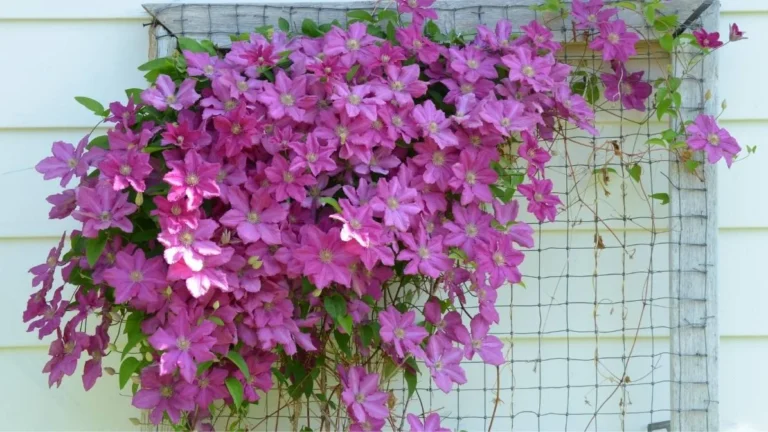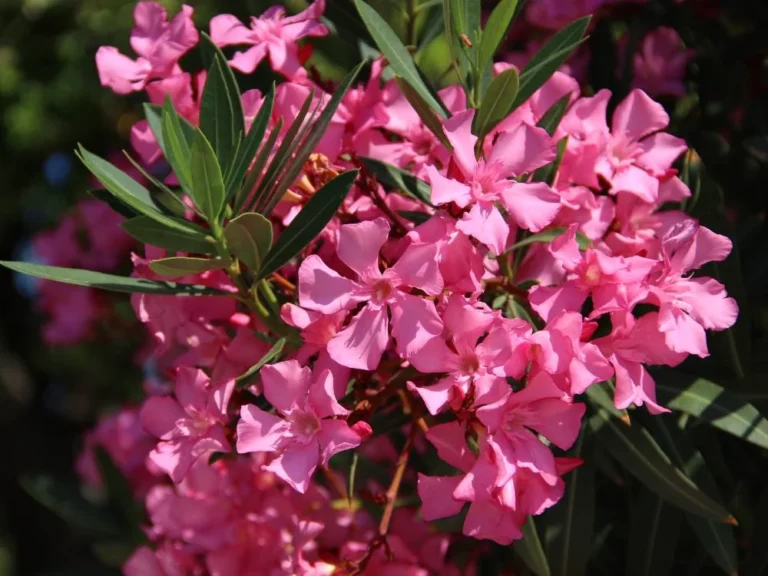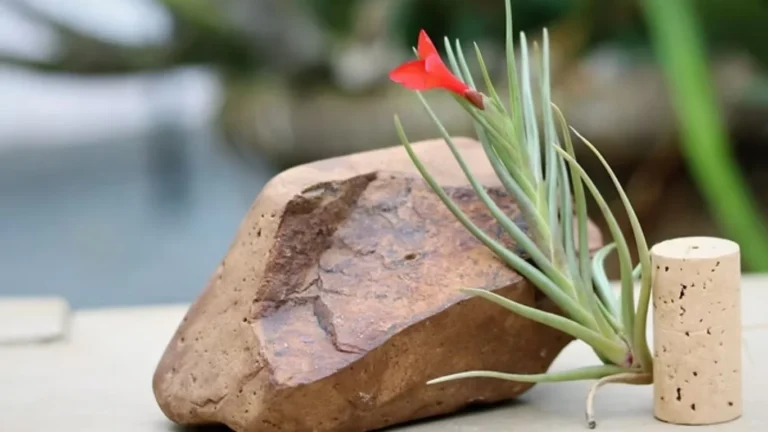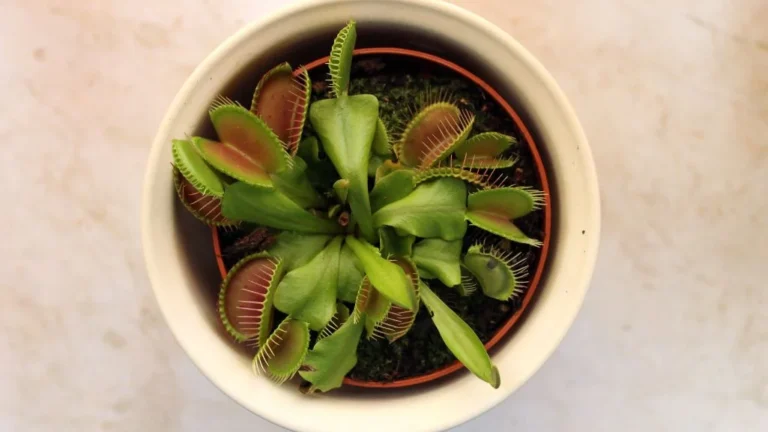Peperomia, At a Glance
Scientific name | Peperomia spp. |
Family | Piperaceae |
Native | Tropical and subtropical regions |
Hardiness Zone | USDA Zones 10 to 12 |
Plant Type | Herbaceous perennials |
Bloom time | Summer & Spring |
How Peperomia Looks
Leaves
Peperomia (radiator plant) are known for their attractive, often succulent-like foliage that holds moisture. The thick and fleshy leaves can be heart-shaped, oval, lanceolate, or even round, with colors varying from deep green to silver, red, or variegated patterns.
Stem
The stems of Peperomia are usually non-woody and green and can be either upright or trailing, depending on the species.
Flowers
The flowers of Peperomia are small, slender, spike-like inflorescences that are typically white or greenish.
Height
Peperomia plants are usually small in shape, with most species growing to a height of 6 to 12 inches (15 to 30 cm).
Types of Peperomia
Popular types of peperomia include peperomia obtusifolia, peperomia tetragona, peperomia caperata (ripple peperomia), peperomia argyreia (watermelon peperomia), peperomia prostrata (string of turtles), peperomia graveolens (ruby glow, peperomia rotundifolia (trailing jade), peperomia pellucida (shining bush plant), peperomia clusiifolia (red edge peperomia), peperomia orba (teardrop peperomia) peperomia verticillata (whorled peperomia), peperomia polybotrya (raindrop peperomia), and peperomia ferreyrae (happy bean plant).
Peperomia’s Requirement
Requirements for peperomia at a glance
Elements | Requirement |
Sunlight | Low to bright, indirect sunlight |
Temperature | 60°F to 80°F |
Humidity | 50-60% |
Soil pH | 6.0-7.0 |
Soil mixture | Moist and well-drained |
Container | Ensure drainage holes |
Water | When the soil dries out completely |
Fertilizer | Once a month during summer and spring |
Note: The soil pH level indicates how acidic or neutral the soil is. On a scale of 1 to 10, with 7 indicating neutrality, a pH value less than 7 indicates acidity, while a value greater than 7 indicates alkalinity. Peperomia requires slight acidity to neutralize the soil.
MIx the Soil Properly
The Peperomia holds water in its fleshy, thick leaves. So, the plant requires a well-drain potting mix so that the plant does not sit on water for too long, which can lead to root rot. On the other hand, this plant also requires moist soil. I use the following components to prepare a perfect soil mixture for peperomi.
- Perlite for improving aeration,
- Coco-peat (in small amounts) so the soil doesn’t dry quickly.
- Small vermicompost or organic compost (optional) for adding nutritional value.

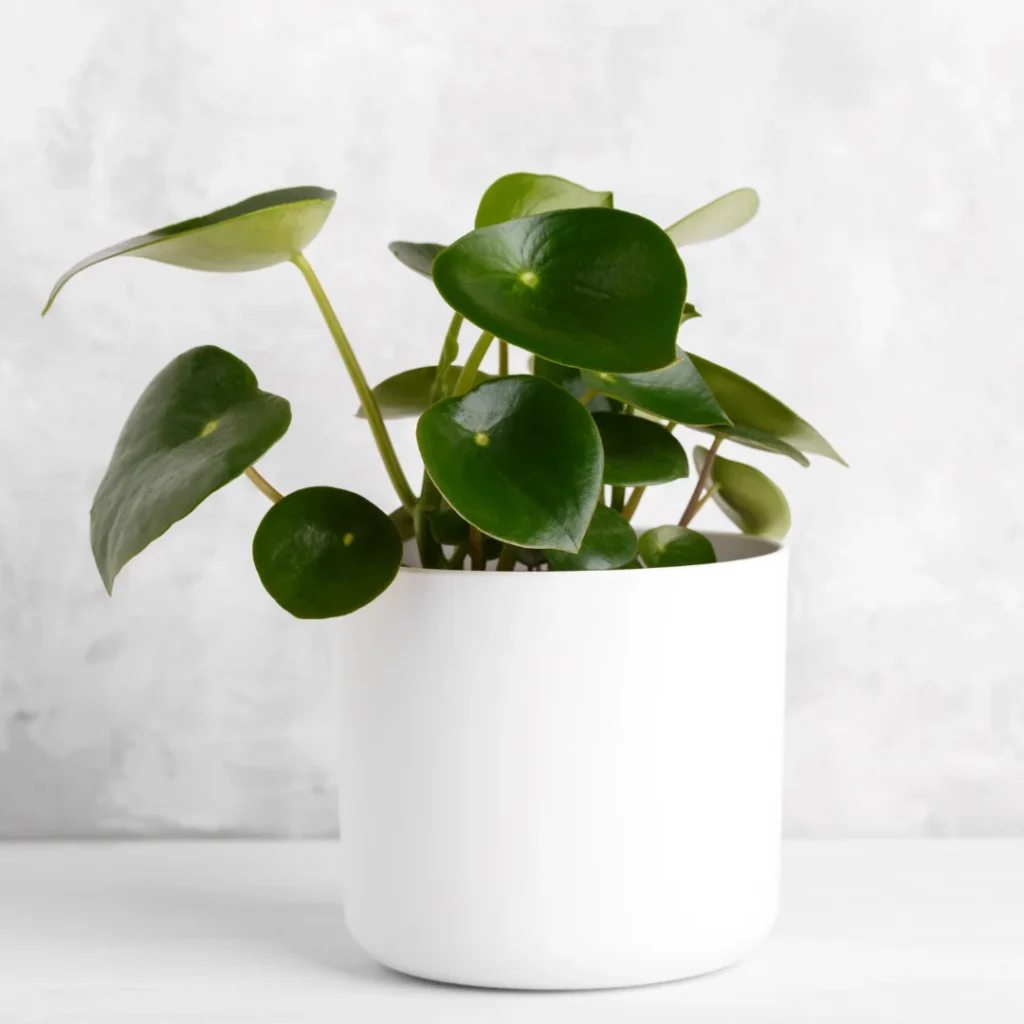
Choose the Right Container
Peperomia (radiator plant) has shallow and delicate roots. The roots grow close to the surface rather than deep in the soil. So, when choosing a container for peperomia, consider the following factors.
- Avoid using a pot that is too large, as excess soil can retain moisture and cause root rot. Choose a container that is 2 inches bigger than the current root size.
- Peperomia has delicate roots that can quickly rot if they stay in water too long. So, ensure the drainage holes are under the container.
- Containers made of ceramic, plastic, or terracotta are suitable for peperomia. It’s important to note that plastic pots retain more moisture compared to ceramic or terracotta pots. So, I recommend keeping the peperomia plant in a clay or terracotta pot, as peperomia requires drier conditions and good air circulation around the roots.
How Much Sunlight Peperomia Needs
Peperomia (radiator plant) can grow in all lighting conditions, from low light to bright indirect sunlight.
- Peperomia thrives in bright, indirect light. Peperomias prefer bright, indirect sunlight, miming the dappled light they receive in their native tropical environments.
- Avoid putting it in direct sunlight; this may burn the plant. Place them near a window with filtered light or use sheer curtains to diffuse direct sunlight.
- Peperomia can survive in low light conditions, but a prolonged period of insufficient light leads to leggy growth and losing patterns of the leaves.
When and How to Water
Peperomia (radiator plant) needs a careful watering routine, as both overwatering and underwatering can harm the plant. Remember the following things while watering peperomia.
- Water the plant when the soil dries out completely. Do a finger dip test or use a moisture meter to check the soil’s moisture level.
- While watering, make sure every layer of soil absorbs water. Keep watering until water starts flowing out of the drainage holes at the bottom of the pot.
- Allow excess water to drain away completely, and never let the plant sit in water for prolonged periods.
- Peperomia requires a humid environment, so regular misting is a good practice. If humidity levels are below 30%, a humidifier must be installed to maintain a consistent humid environment.
Fertilizer for Peperomia
Peperomia needs fertilizer for its proper growth and bloom. During its growing time (summer and spring), once a month, fertilize the plant with a nitrogen-based water-soluble fertilizer such as NPK (nitrogen, potassium, phosphorus) 10-10-10. It’s better not to put fertilizer in during winter as plants go into dormancy in winter. As Peperomia roots are delicate, dilute the fertilizer to half its strength before putting it on the soil.
When and How to Repot
Peperomia needs repotting; when the plant’s roots grow out of the drainage holes, the soil dries out too quickly or does not have sufficient nutrition. Typically, peperomia needs repotting every 1-2 years as the plant grows well in pot-bound situations.
- Repot in spring or early summer, during the growing season. Avoid repotting during the dormant winter months.
- Choose a container 1-2 inches larger than the current one, and prepare the potting mix according to the earlier instructions.
- Water the plant thoroughly before the day of repotting to make removal easy.
- Be careful during the repotting process, as the roots of peperomia are very delicate.
- Check the roots for disease or rot and trim off rotten and leggy roots.
- After repotting water, the plant is placed lightly in a stable environment.

Prune to Thrive
Pruning Peperomia involves removing dead and dried leaves and trimming leggy stems. Regular pruning helps maintain the plant’s shape and promotes more blooming for some species.
- If the plant becomes leggy or overgrown, cut the stems just above a node. This encourages the plant to branch out and become bushier.
- To remove dead/damaged/ dried leaves, cut the leaf from its base without damaging the stem.
- Avoid pruning too at once; this can stress the plant.
Protect Peperomia from Pest
Peperomia (radiator plant) is not prone to many pests. But occasionally, common houseplant pests like aphids, mealybugs, spider mites, fungus gnats, and scale insects can attack.
- Aphids: Small, sap-sucking insects often appear in clusters on new growth.
- Mealybugs: These pests look like tiny cotton balls and can be found on the leaves and stems.
- Spider Mites: These tiny pests create delicate webs on the plant and cause sprinkling on the leaves as they feed.
- Fungus gnats: Tiny black flies around the soil, larvae in the soil, and damage to roots.
- Scale insects: This insect creates hard, brown, or greyish bumps on stems and leaves.
Inspect the peperomia to prevent these pests. After finding any pests, immediately separate the plant from other plants and remove the pests by wiping the leaves with a cotton swab dipped in rubbing alcohol or using insecticidal soap or neem oil.
Dealing with Other Common Issues
Leaf yellowing
Leaf yellowing is a sign of overwatering. Peperomia does not require too much water, so water the plant when the soil dries completely. Ensure the pot has good drainage and avoid letting the plant sit in water.
Mushy stem and root rot
As peperomia holds water in its stems and leaves, overwatering can also cause mushy stems and root rot. In this case, repot the plant with new soil.
Wilted, dry, and crisp leaves
I faced this issue due to underwatering my plant. Water the plant when the soil dries out. Don’t wait for too long after the soil dries out.
Leggy growth
When peperomia doesn’t get enough light, it gradually takes leggy shape. So, keep it in a bright place.
Root rot
Root rot often occurs due to improper potting soil. Peperomia requires well-drained potting soil, so check the soil to see if it contains correct materials like coarse sand, perlite, and pumice stone for proper drainage.
Crispy and brown edges of leaves
This issue indicates too much sun exposure to the plant. This plant loves sunlight, but too much direct sunlight is a problem. Keep it in a place where it gets bright, indirect light.
Leaf dropping
Peperomia drops its leaves due to cold temperatures. When the temperature drops below 50 degrees Fahrenheit, bring the plant indoors and maintain a warm environment.
Propagation Process of Peperomia
Propagating kalanchoe is a straightforward process that can be done through stem cuttings, offsets, and leaf cutting. Here’s a step-by-step guide for each method. Peperomia (radiator plant) can be propagated through stem and leaf cutting. The step-by-step process of propagating is given below.
Stem cutting
- Select a healthy stem with several leaves.
- Cut a 4–6-inch stem section using a sterilized knife or scissors.
- Cut the leaves from the lower half of the stem cutting and put the cutting into a well-drain potting mix, burying it about an inch deep.
- Water sparingly, keeping the soil just moist until roots develop.
- Conversely, the cutting can be placed in a jar filled with clean water. In that case, change water once in 10 days.
- After a few weeks, the cutting should start to root and show new growth; place it in the well-drained soil mix.
Leaf-cutting
- Choose a healthy, fresh, undamaged, matured leaf from a matured mother plant.
- Separate the leaf from the stem with the node by twisting or cutting using a knife.
- Insert the cut end of the leaf sections into a small pot filled with a well-draining potting mix. Ensure the node is buried under the soil.
- Mist the soil occasionally to keep it slightly moist.
- New roots and plantlets will develop in a few weeks.
- Once the roots get established, start caring for the plant like an adult one.


Tips for Peperomia
- Rotate the once in ten days so that every part of the plant gets enough light.
- Avoid putting the plant under direct sunlight.
- Prune dead and damaged leaves to encourage new growth and bloom.



